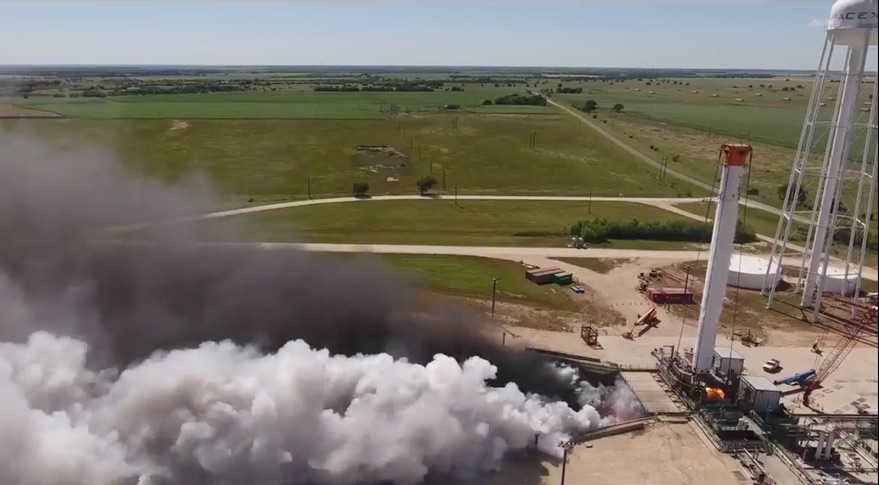.
Static fire test brings Falcon Heavy one step closer to debut

WASHINGTON — SpaceX said May 9 that it has successfully test-fired the center core stage of its first Falcon Heavy rocket, a key step towards its long-delayed first launch later this year.
In a tweet, the company said that it completed the first static fire of the core stage of the rocket at the company’s McGregor, Texas, test site last week. The company did not disclose the precise date of the test or its duration. The company included in the tweet a video showing about 15 seconds of the test.
The Falcon Heavy uses three Falcon 9 first stages, or cores, along with an upper stage, an approach similar to United Launch Alliance’s Delta 4 Heavy. The two side booster cores for the first launch will be previously-flown Falcon 9 first stages, but the center core will be a new stage, modified to accommodate the side boosters.
The development of the Falcon Heavy has been plagued by delays. The vehicle, whose first launch was planned for 2013 when SpaceX unveiled its plans for the vehicle in April 2011, is now set to fly an initial, demonstration mission in late summer, SpaceX Chief Executive Elon Musk said at a March 30 press conference after the first Falcon 9 launch that used a previously-flown first stage.
Those delays, Musk said, were in part due to the unforeseen complexity in modifying the center core booster. “At first it sounded easy. We’ll just take two first stages and use them as strap-on boosters,” Musk recalled at that March briefing. “Actually, no, it’s crazy hard and required redesign of the center core and a ton of additional hardware.”
Part of that schedule is also driven by repairs to the company’s Space Launch Complex (SLC) 40 pad at Cape Canaveral, damaged during a pad explosion in September 2016 during preparations for a Falcon 9 static-fire test. That has forced the company to use Launch Complex 39A at the Kennedy Space Center, which the company planned to use for Falcon Heavy and crewed Falcon 9 launches, for more routine Falcon 9 missions.
SpaceX President Gwynne Shotwell said in February that the company expected to have SLC-40 repaired by June, allowing most Falcon 9 launches to shift there while Launch Complex 39A is updated to support Falcon Heavy and crewed Falcon 9 launches.
SpaceX had a backlog of several Falcon Heavy launches, including the Space Test Program 2 mission for the U.S. Air Force tentatively scheduled for late 2017. That mission includes six satellites for the Constellation Observing System for Meteorology, Ionosphere and Climate (COSMIC) 2 program, a joint effort of the United States and Taiwan to collect GPS radio occultation data for weather forecasting.
However, a National Oceanic and Atmospheric Administration official suggested last week that the COSMIC-2 satellites might not launch until 2018. Those satellites will be “launching as soon as SpaceX Falcon Heavy gets into space,” said Steve Volz, assistant administrator for NOAA Satellite and Information Services, in a May 3 presentation to the Space Studies Board of the National Academies here. “Probably about spring of next year.”
Quelle: SN
